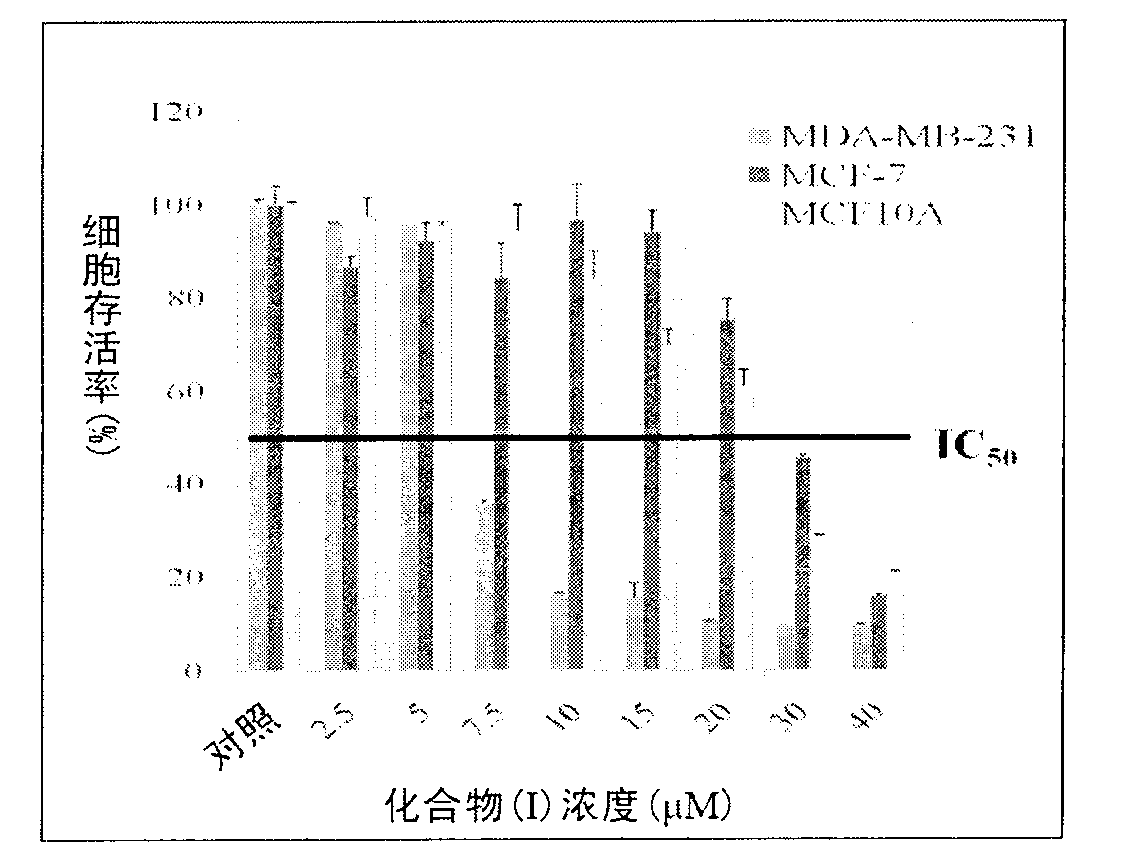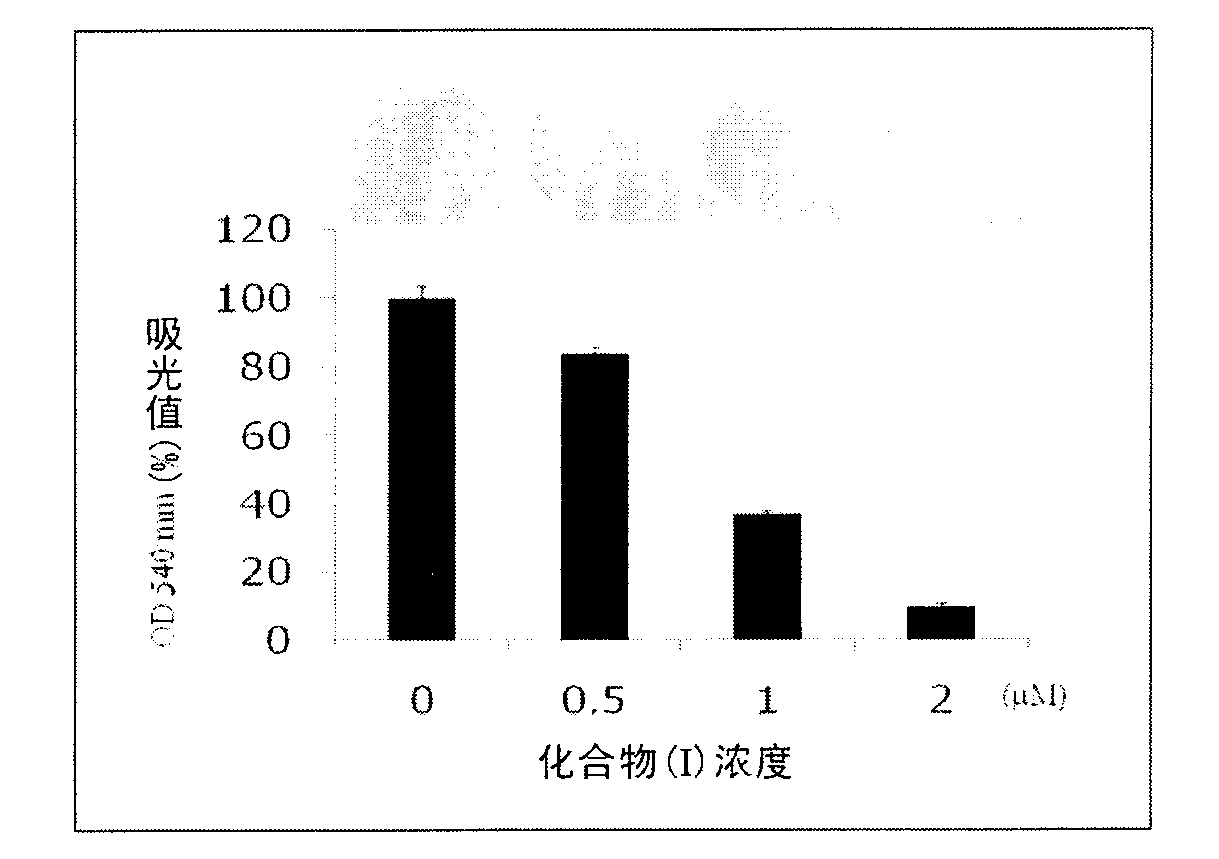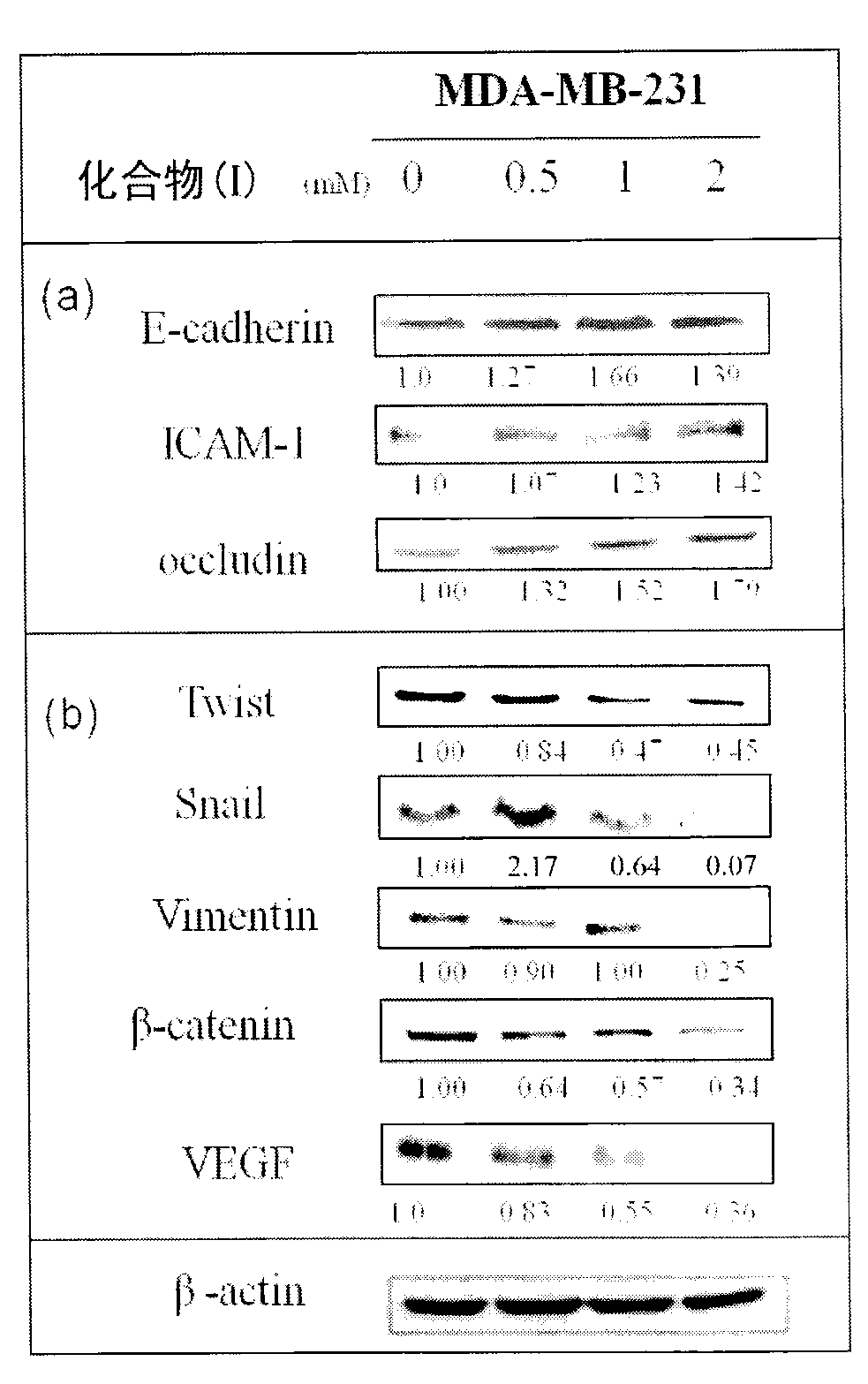Compounds and pharmaceutical compositions thereof for inhibiting mammalian tumor cell proliferation
A technology of tumor cell proliferation and pharmaceutical composition, applied in the field of compounds
- Summary
- Abstract
- Description
- Claims
- Application Information
AI Technical Summary
Problems solved by technology
Method used
Image
Examples
experiment example 1
[0053] Experimental example 1: Compound (I) can affect the survival rate of cancer cells in different tissues
[0054] The compound (I) of the embodiment of the present invention has the ability to kill various tumor cells. The median lethal dose (IC) of compound (I) to different cells 50 ) Refer to Table 1 below.
[0055] Table 1. Analysis of the effect of compound (I) on the activity of cancer cells in different tissues
[0056] cell type
[0057] From the results in Table 1, it can be seen that compound (I) has the most significant inhibitory effect on the development of breast cancer cells, and its IC 50 is 7.51 μM. Therefore, breast cancer cells will be taken as an example to analyze the effect of compound (I) on the growth of breast cancer cells.
experiment example 2-1
[0058] Experimental Example 2-1: Compound (I) inhibits the survival rate of breast cancer cells
[0059] The cells used in the experiment are human breast cell MCF-10A, human breast cancer cell MCF-7 and MDA-MB-231. MCF-7 is an estrogen receptor alpha (ERα) positive (ERα(+)) breast cancer cell line; MDA-MB-231 cell line is an estrogen receptor negative (ERα(-)) breast cancer cell line cell line.
[0060] Breast cancer cells (MDA-MB-231, MCF-7) were purchased from the Bioresource Collection and Research Center (BCRC), and cultured in DMEM containing 10% fetal bovine serum (FBS). in liquid culture medium. Human mammary gland cells MCF-10A were cultured in DMEM medium (fetal bovine serum-DMEM F12 / insulin / cortisol / epidermal growth factor) containing 5% fetal bovine serum (FBS). The incubator is maintained at 5% CO 2 , 37 ℃ constant temperature. When the cells were cultured to a certain number, the culture medium was removed by centrifugation at 900 revolutions (rpm) for 10 mi...
experiment example 1-2
[0066] Experimental Example 1-2: Compound (I) inhibits the formation of cell colonies of tumor cells
[0067] In order to understand the effect of compound (I) on the colony formation of breast cancer cell MDA-MB-231, it was observed by colony formation assay.
[0068] Figure 1B Part (a) of the cell is attached to the cell matrix, reacted with different concentrations of compound (I) for 24 hours, and then replaced with fresh 10% FBS cell culture medium, and cultured for 5 days. Colony growth; Figure 1B Part (b) is the value obtained after scanning the cell colony shown in part (a) on the computer and dissolving the colony with 70% alcohol, and measuring the absorbance at 540nm.
[0069] Figure 1B The results of part (a) show that compound (I) has a significant inhibition of the colony formation of breast cancer cells; the results of part (b) can be clearly seen that the number of breast cancer cell colonies formed in the experiment is related to the dose of compound (I) ...
PUM
 Login to View More
Login to View More Abstract
Description
Claims
Application Information
 Login to View More
Login to View More - Generate Ideas
- Intellectual Property
- Life Sciences
- Materials
- Tech Scout
- Unparalleled Data Quality
- Higher Quality Content
- 60% Fewer Hallucinations
Browse by: Latest US Patents, China's latest patents, Technical Efficacy Thesaurus, Application Domain, Technology Topic, Popular Technical Reports.
© 2025 PatSnap. All rights reserved.Legal|Privacy policy|Modern Slavery Act Transparency Statement|Sitemap|About US| Contact US: help@patsnap.com



